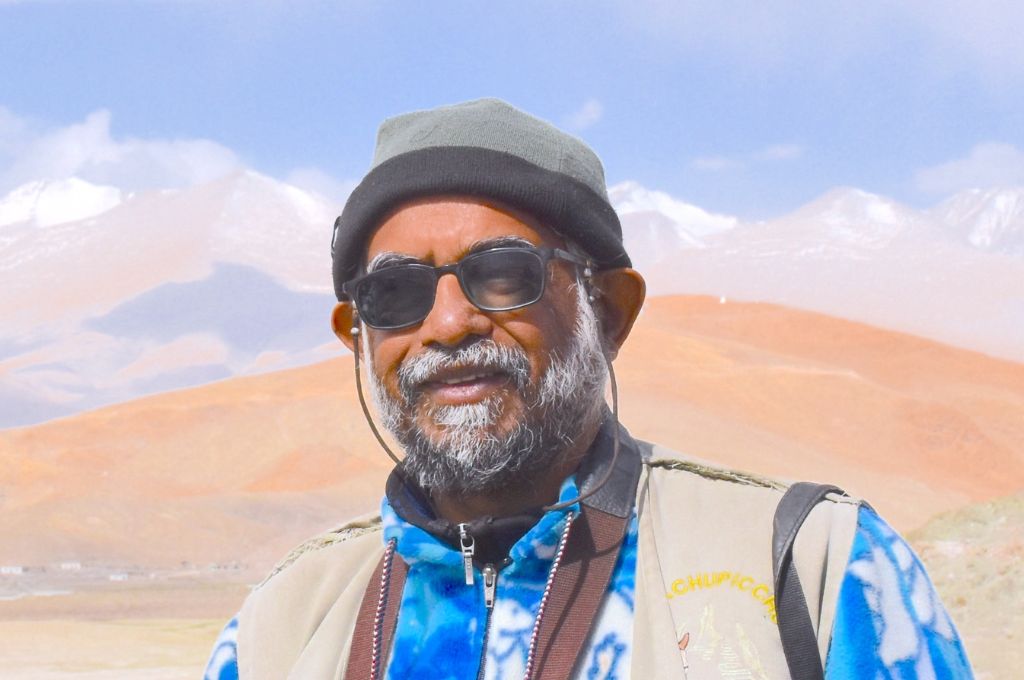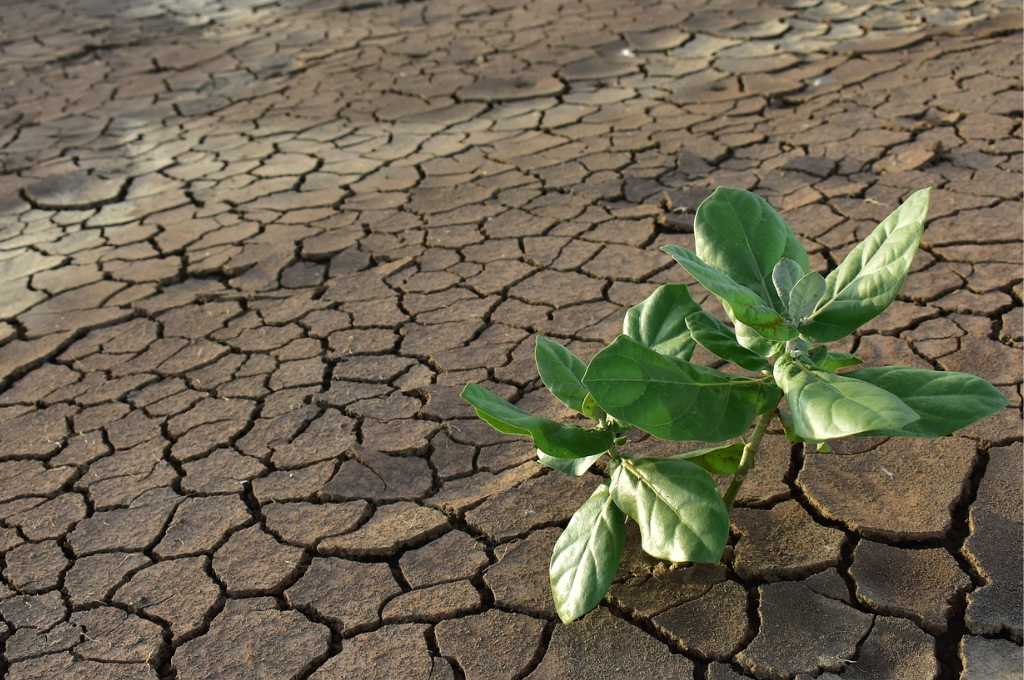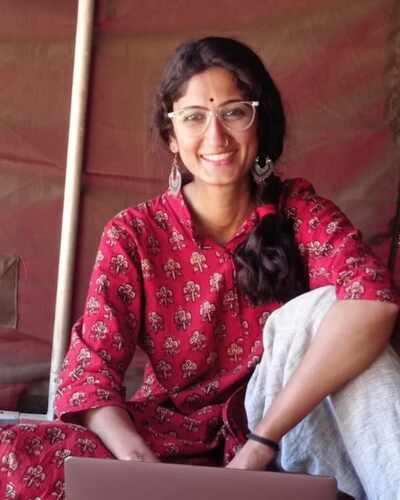Ashish Kothari is one of the founders of Kalpavriksh, a nonprofit working on environmental and social issues at the local, national, and global levels. Until recently, he led their programme on alternatives, which works to create alternatives to dominant systems such as patriarchy, capitalism, and casteism, which perpetuate injustice, inequality, and unsustainability.
He has been active in various people’s movements, including the Narmada Bachao Andolan (Save the Narmada movement), Beej Bachao Andolan (Save the Seeds movement), and the Community Forest Rights Learning and Advocacy Network. He helped set up and is on the coordination teams of Radical Ecological Democracy, Vikalp Sangam (Alternatives Confluence), and the Global Tapestry of Alternatives.
In this interview with IDR, Ashish discusses how issues of development and sustainability are understood, as well as the need to explore alternative ideas and indigenous, non-dominant knowledge systems. He also outlines what collectives and nonprofits can do to incorporate these alternatives into their everyday practices.

What is wrong with the dominant discourse of development and sustainability?
The term ‘development’ has largely been defined by economic markers such as GDP, or gross domestic product, which measures the amount of goods and services a country produces. However, it focuses only on quantifiable or monetisable economic activity, which significantly narrows the broader concept of development.
Because of this narrow focus, any form of production, trade, or consumption is often seen as inherently good, without consideration for the negative consequences. Ecological, social, psychological, and cultural impacts are externalised by this model. The emphasis is on large infrastructure projects, heavy industrialisation, and urbanisation. It assumes a linear progression from hunter-gatherer to agricultural to industrial and post-industrial societies as being necessary and inevitable; and this is where the labels of underdeveloped, developing, and developed countries come from.
To maximise growth, this model treats both people and nature as commodities to be exploited for production and consumption. It also tends to view human beings as being separate from nature. This perspective is rooted in certain modern Western philosophies such as Cartesian dualism, which sees both humans and nature as machines that are fundamentally separate from each other. This separation has deeper cultural and social roots, including patriarchy, colonialism, and the division of the earth into nation states with fixed boundaries and competitive economies. Another result has been rapidly growing inequality across the globe, such that a handful of billionaires own or control most of the wealth.
All these factors together create a model with no inherent logic for true sustainability or equity. The results of this are evident today in the various ecological, social, and economic crises we face.
Could you give an example or two of what this kind of unsustainable development looks like?
Let’s take agriculture as an example. In the 1960s, India underwent the Green Revolution, which was touted as the development of agriculture. It included moving away from traditional forms of agriculture, in which land, seeds, and water were interrelated elements, and where agriculture was not only an economic activity but also part of social and cultural life. Instead, these elements were treated as mere components in a narrowly defined economic production process, essentially as commodities. The focus shifted to producing for the market rather than for self-consumption.
Fertilisers, pesticides, as well as hybrid and genetically modified seeds have been introduced to maximise agricultural production. But production is defined very narrowly, focusing solely on the quantity of food grains produced per acre. This approach has ignored sustainability during production processes and the additional benefits that traditional agriculture provided, such as fodder, biodiversity, and a thriving ecological system.
For example, in an organic rice field, you might find crabs and fish, which contribute to the overall productivity and ecological health of the area, and to the farmer’s food basket. In contrast, a Green Revolution rice field focuses only on the grain, which often leads to the destruction of other aspects of productivity of the farm and undermines the ecological resilience of the soil given the heavy use of chemicals. This is a classic example of what’s wrong with the mainstream model of development.
When it comes to big dams such as the Sardar Sarovar Dam, the problems are similar. The focus is on maximising hydroelectricity and irrigation, while neglecting the broader ecological and social impacts as also less destructive alternatives. The Sardar Sarovar Dam, part of the Narmada Valley Project, was intended to provide hydroelectric power, irrigation, and water to people across Gujarat, Maharashtra, Madhya Pradesh, and Rajasthan. The idea was to direct water from Narmada River in Gujarat to all these places. However, the project led to the mass displacement of communities, submergence of wildlife as well as forest and agricultural land, unequal power benefits, and other issues. The assumption [under which] this type of development [operates] is that there is too much water in one place and too little in another. This ecologically flawed perspective ignores the needs of the local downstream ecosystems, such as the highly productive coastal and mangrove ecosystems in the Gulf of Khambat.
Moreover, the assumption that regions like Kachchh in Gujarat cannot manage with their natural rainfall leads to misguided projects that transfer huge amounts of water from one place to another. This fails to factor in the potential for local water self-sufficiency through proper rainwater harvesting and sustainable water use. More than 100 villages across Kachchh have demonstrated that by managing their water resources wisely and not growing water-intensive crops such as sugarcane, they can be water self-sufficient even with limited rainfall.
This is why there is a need to question the mainstream version of ‘development’—which is top-down, exclusionary, often displaces local communities for profit motives, and is ecologically unsustainable—and seek alternatives.
In this context, what would alternatives look like?
Alternatives refer to ways of fulfilling human needs and aspirations that do not harm the planet or marginalise large segments of humanity. These include political and economic democracy; grassroots initiatives addressing basic needs; movements for justice and equality; and policies, technologies, and frameworks that challenge oppressive, unequal, and unsustainable structures. This alternative model involves not just technocratic solutions such as changes in equipment—for instance, the adoption of solar technology or digitisation—to enhance livelihoods, but also social and political changes to make systems more inclusive and equal. Alternatives involve looking at systems in their entirety and understanding the various interlinkages and intersections at play. It is about learning from the ground up rather than imposing academic or administrative systems approaches from above, which unfortunately is the way the current systems discourse operates.
One example of alternatives can be found in the collective governance and management of forests in central India.
We can find examples of alternatives everywhere, especially among communities that manage their resources collectively, and in ways that ensure fair distribution and sustainable use. For instance, during the COVID-19 pandemic, a community-led movement in Nagaland helped people navigate the harsher second wave in March 2021 in a better way. Initiated by the women of the North East Network (NEN), the initiative [made way for] essential activities such as vending and farming to continue despite restrictions. Women street vendors in Kohima rallied to secure limited vending spaces through collective advocacy with municipal councillors. Women from rural areas shared the herbs they had foraged and the vegetables they had harvested with urban residents, distributing them in various locations such as hospitals, where people could take what they needed.
Another example can be found in the collective governance and management of forests—empowered by the Forest Rights Act—in central India. In Maharashtra’s Gondia district, where 75 percent of the population are Gond and Halba Adivasis, more than 250 villages have secured their community forest resource rights (CFRR). In Deori block [of Jharkhand’s Giridih district], elected representatives from 29 villages have formed a federation to manage and sell minor forest produce. During the 2020 lockdown, the federation obtained government permission to continue collecting tendu leaves and mahua, vital sources of income for the villagers. Despite the challenges, the federation facilitated the safe collection and sale of these products, ensuring that all adults from 5,069 families were involved in and compensated for their work.

How can nonprofits working closely with communities on the ground incorporate an alternative approach? What needs to change to make this possible?
Most of the development sector, including nonprofits and donor agencies—leaving aside the government for a moment— unfortunately still relies on tried, and I would say, tired methods. Even when we talk about the Sustainable Development Goals (SDGs), the approach is still fairly conventional. For example, aiming for 100 percent school enrolment and literacy is a noble goal, but nobody is asking what kind of learning or literacy we are aiming for. What happens when someone becomes literate in English but forgets their own language? They often cannot compete with more privileged English speakers vying for the same jobs, nor are they any longer equipped to take up traditional occupations.
The vast majority of development scenarios are still stuck on approaches where people from cities come to tell villagers what to do.
The vast majority of development scenarios are still stuck on approaches where people from cities come to tell villagers what to do, and formal science dominates other forms of knowledge. Sometimes, this happens because donors tend to dictate terms that do not allow for creativity and experimentation. However, one of the most fundamental changes needed is in our mindsets. If the dominant mindset is that only formal sector science can solve problems, or that only big corporations have the resources to find solutions, then we will never engage in these kinds of collaborations. It is widely believed that people in villages—often labelled as ‘illiterate’—have nothing to contribute to solutions. The downgrading of folk knowledge systems has been an issue since colonial times. To achieve this [mindset] change, there is also a need to focus on India’s education system. Even 75 years after independence, the Indian education system, designed during the British rule, remains fundamentally colonial. Some states have made positive changes, but overall, we still teach rural kids that their parents’ and communities’ knowledge systems are outdated and primitive, and [we tell] urban kids that rural India is dragging us down.
Here are some ways in which nonprofits can centre alternative thinking in their work:
1. Prioritise alternate knowledge systems
For nonprofits working with communities, prioritising alternative or hybrid knowledge systems can help strengthen knowledge production, leading to more effective and contextually relevant solutions. Many civil society groups have already developed innovative solutions by leveraging local knowledge and resources.
Alternative education is one area where civil society has been particularly active, creating new models that respect and incorporate local knowledge and languages. A comprehensive alternative is Marudam Farm School (Marudam) in Tamil Nadu, which dispenses with the formal curricula set by the government and the need for exams. Some elements of the conventional system are still present to ensure that students can pursue higher education in the traditional sense if they choose, but the approach is fundamentally different from conventional education.
At Marudam, the curriculum is formed democratically, with a strong emphasis on hands-on, activity-based learning. They follow the Gandhian concept of Nai Talim (basic education), which emphasises working with the head, hands, and heart, rather than just forcing students to do rote memorisation. There’s a strong focus on integrating with the local community, learning from and within the local environment, helping sustain and restore local ecosystems, and creating an inviting learning environment where each child’s innate abilities, skills, talents, and perspectives are nurtured rather than suppressed.
This principle of valuing different kinds of knowledge applies to every sector. For nonprofits, recognising and integrating these knowledge systems is crucial. Emphasising these systems not only preserves valuable local wisdom but also ensures that the solutions developed are sustainable and deeply rooted in the communities they serve.
2. Bridge the gap between different knowledge systems
Additionally, collaborations between researchers, scientists, and indigenous knowledge holders are essential to thinking alternatively. For instance, in Telangana, the Krishi Vigyan Kendras are run collectively by government-appointed scientists and Dalit women farmers. This collaboration, probably the only one of its kind in India, has been going strong for the last 20 years. Both the farmers and the government scientists acknowledge that this partnership has enabled them to develop sustainable, small farm–based agricultural systems.
The Deccan Development Society (DDS), another such collaboration, has shown how traditional and organic methods can be highly effective. In the Telangana villages where DDS works, Dalit women farmers now have their own livestock and seeds and are socially and financially empowered, breaking free from the oppressive control of upper-caste large landholders on whom they were earlier dependent.
This highlights the enormous potential of integrating multiple knowledge systems—ranging from those of local communities to formal sector institutions, and from traditional to modern approaches—to complement and enhance each other.
3. Advocate for policy changes
Policy advocacy is essential to scale up successful local initiatives. Nonprofits and collectives act as that crucial bridge between policymakers and communities on the ground. Therefore, they can demonstrate the potential of these initiatives and advocate for supportive policies. For example, significant grassroots advocacy has led to the adoption of organic farming policies in several Indian states such as Sikkim, Ladakh, and Uttarakhand.
4. Scale, but collectively
Nonprofits and collectives can help create large-scale change not by scaling up a single initiative, which can lead to bureaucracy and power concentration, or by trying to replicate similar efforts in different areas, which may not work due to varying local contexts. Instead, they should focus on ‘outscaling’. This means learning the processes, values, and principles from successful initiatives, adapting them to local contexts, and then connecting with other people and networks to build a collective movement for broader change. A good example of this is the setting up of the Millet Network of India and the Millet Sisters Network of India with the help of Dalit women farmers in Telangana. These networks have successfully promoted millets to thousands of farmers. Their collective advocacy eventually made millets an increasingly central part of India’s agricultural policy, though there is still a long way to go.
However, it’s important to point out that at the moment, sustainable alternatives are exceptions rather than the norm within the development sector. There is growing fear that if an unconventional approach is taken, the government or other entities may crack down on the organisation. As nonprofits, our role should be to recognise that people on the margins have their own knowledge and institutions, or the agency to create them. Instead of coming in with a charity mindset, thinking “We know best, and we’ll help you,” we need to adopt approaches that respect and build upon the wisdom of local communities while also enabling them to change aspects that may be problematic, such as gender and caste inequities.
—
Know more
- Watch this short documentary about how ordinary people are constructing alternative methods of development.
- Read this article about how conservation policies can be more inclusive by including indigenous narratives.
- Read more about environmentalist are proposing an alternative development model for the Himalayan region.






